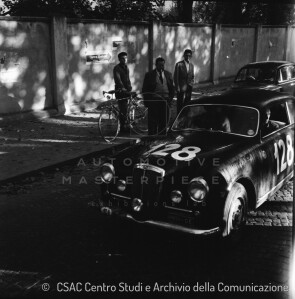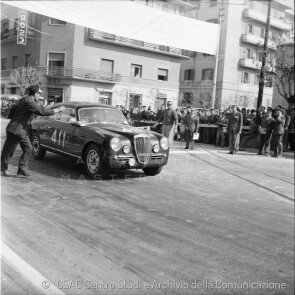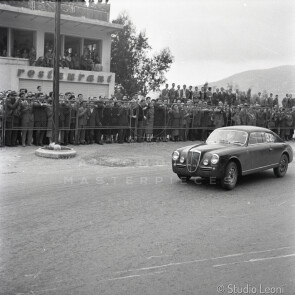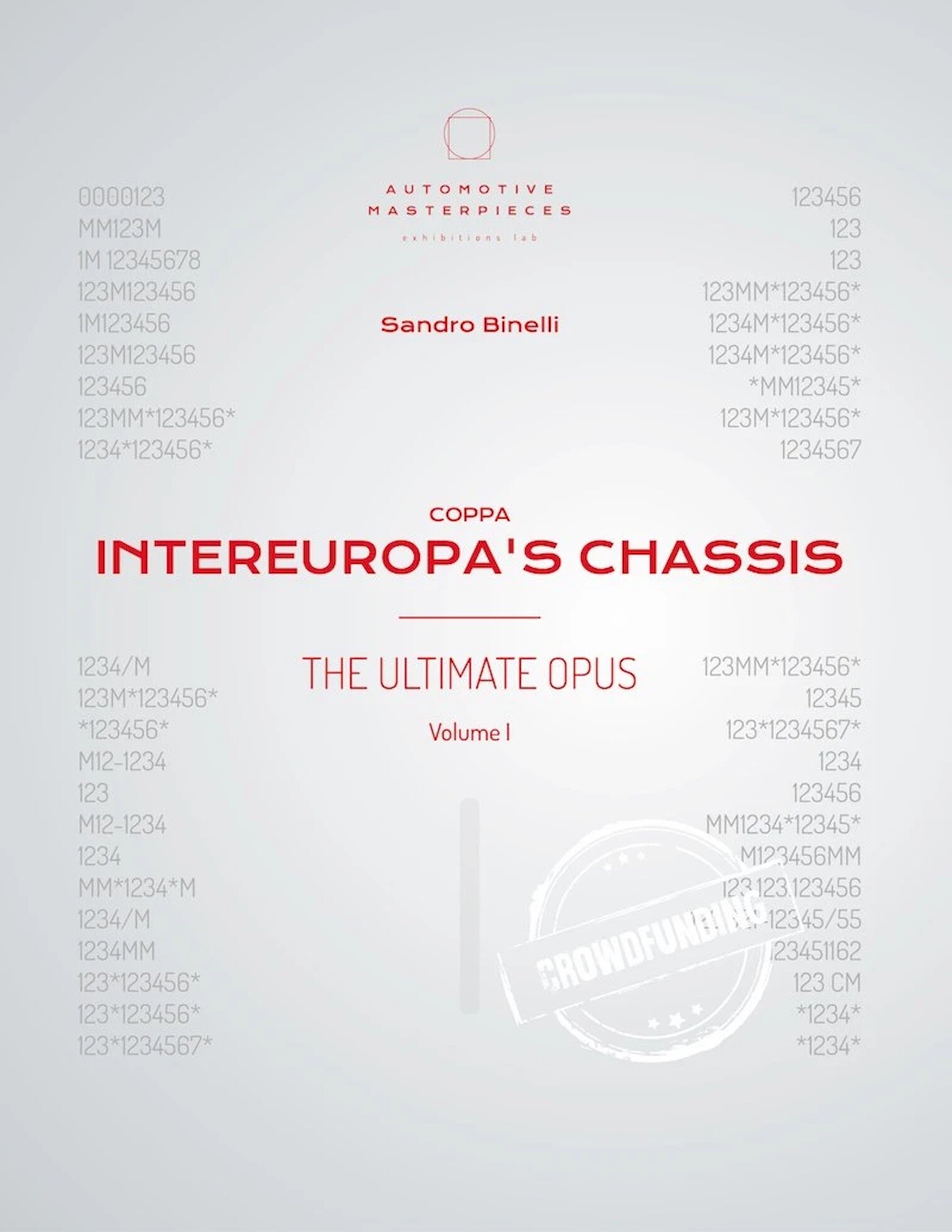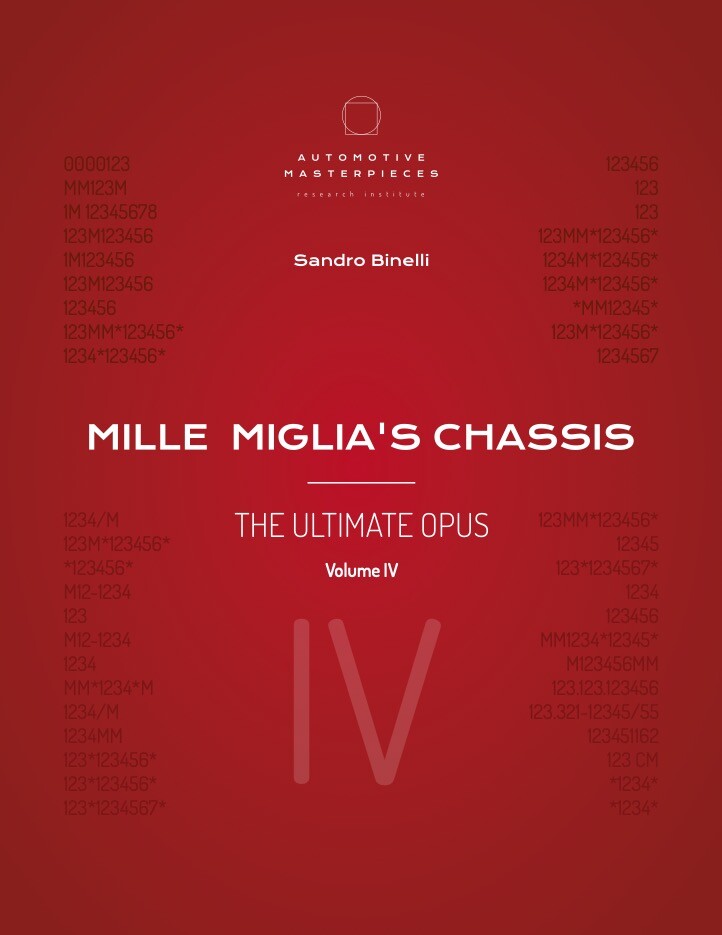
1953 Lancia Aurelia B20
ON/OFF
Why am I an Automotive Masterpiece?
The post-war period brought a desire, or rather a hunger, for renewal. Everything that suggested the past, before the war, needed to be forgotten or overcome. Cars became the primary symbol of this renewal, both in practice and in dreams. From its very first appearance, the Lancia Aurelia made a sensation, not only because, together with its contemporary Fiat 1400, it represented the first truly new "Italian" automotive product of the post-war period, but also for its technical innovations. Lancia’s revolutionary first post-war car, designed by Vittorio Jano, was introduced in 1950. It featured the first production V6 engine—a 60° design developed by Francesco de Virgilio—combined with a balanced transaxle gearbox and inboard rear brakes, all of which were groundbreaking innovations in post-war Europe. Developed in various versions, the B20 coupe was its pinnacle. The Aurelia Gran Turismo was introduced in 1951 as a coupé evolution (B20 type) of the B10 saloon with an engine that, finally, was introduced with a displacement at the class limit. This was the result of a new company-wide policy imposed by Gianni Lancia, who had taken over from his mother in 1947. The Aurelia engine had been increased to 1,991 cc in 1951 and, in its uprated form, was fitted into the B20. Lighter and with a higher gear ratio than the saloon, the B20 was capable of exceeding 160 km/h. Introduced in 1953, the 3rd and subsequent series B20s were powered by a 2,451 cc, 118 hp version of the pushrod V6. The design, created by Mario Felice Boano and refined and built by Pinin Farina, became an instant classic due to its smooth, clean lines and competition prowess. The car was immediately entered for the 1951 Mille Miglia, with three "private" examples, out of the four that were registered in the names of their drivers, finishing in the top seven overall and taking the first three places in class. Bracco-Maglioli finished second, beaten only by Villoresi’s Ferrari, which had over twice the displacement of the Lancia. Bracco, partnered by Lurani, later drove his car from Italy to France and finished 12th overall in the Le Mans 24 Hours. Lancia prepared seven "Corsa" versions of the car for 1952, six of which were entered by privateers. These cars secured 2nd, 3rd, and 4th overall in the Giro di Sicilia, finished 3rd, 5th, 6th, and 8th overall at the Mille Miglia, secured 1st, 2nd, and 3rd at the Targa Florio, placed 4th, 6th, 8th, and 9th in the Coppa d'Oro delle Dolomiti, and, when equipped with a supercharger, took 4th at the Carrera Panamericana.
The Aurelia B20 appears to have been classified “by series” only in the first two editions with a 2-liter engine, while the production of the 2.5-liter engine has never been officially classified by series, a subdivision that entered common use for greater immediacy. The so-called “Third Series” (chassis from B20-2232 to B20-2951) was presented at the Salone dell’Auto di Torino in April 1953 and was produced from March to December 1953. It represents the most significant evolution of the model, both mechanically and aesthetically. The 2-liter engine was replaced by a 2.5-liter unit which, despite a reduction in compression ratio, increased power to 118 hp and torque. Beyond the increased displacement, numerous mechanical innovations were introduced, including a new camshaft profile, the adoption of a bigger carburetor, and newly cast engine blocks and cylinder heads. The result was a significant performance boost: the top speed increased to an impressive 185 km/h, making the car highly competitive against rivals such as the Alfa Romeo 1900 and the Fiat 8V. Aesthetically, the rear adopted a more harmonious, rounded appearance due to the removal of the tail fins and a more curved trunk lid. Changes were also made to the front end, with redesigned headlights that lost their characteristic "eyelids" and a newly styled grille. The overall dimensions of the car changed slightly as well.
The Aurelia Gran Turismo 2500 (definition that includes coupés and spiders) in the B20 coupé version with chassis no. *B20-2342* is an example of the so-called Terza Serie (3rd series). In 1953 the car was bought brand new and painted green, with interiors covered in the famous Lancia cloth, in a hazelnut tone; the owner was mr. Giorgio Fassio, eldest son of Ernesto who was industrialist, shipowner, publisher known for being active in the marine insurance sector. The Fassio was a very wealthy Genoese family, lovers of beautiful cars; Giorgio himself was close to the Drake, Enzo Ferrari. In 1954 a Chemical/Oil Products Tanker in the family fleet was given the name "Giorgio Fassio". Therefore, an important first owner. But the sporting history of the car, only recently rediscovered, began immediately afterwards, when Fassio sold it to Carlo Croce (although, to be precise, the car was registered to his wife, Anna Maria Mutti), son of Fioravante Croce, another Genoese shipowner. A peculiar coincidence: like Giorgio Fassio, Carlo Croce also had a ship (a cargo vessel) in the family fleet that took his name. He and Giorgio Fassio shared the social class and inevitably hang out in the same environment; their passion for cars does the rest. Croce raced under the Genoese “Scuderia Janua” team insignia, was an excellent racing driver and began to use the B20-2342 on the most important racetracks. He started in 1954 with the Giro Automobilistico d'Italia where he qualified 7th overall and 5th in class. The good result probably led to the sale being finalized and the car was registered in the name of Croce's wife, Anna Maria Mutti. After that first race, for a more sporty outfit, the bumpers were removed and above all the sliding glass windows were fitted. In 1955 the gentleman driver competed in the Coppa del Mare e dei Monti where he was 9th overall and even 1st in class. At the end of April, car and driver touch the sky, taking part in the Mille Miglia. Croce can be described as a veteran, in fact he participated in the 1951 red arrow on Lancia Aprilia, 1952 on Alfa Romeo 1900, 1953 on Lancia Aurelia B21, but obtained his best result only in 1955 with the B20-2342, ranking a very honorable 18th place overall, worthy of the best professional drivers on sports cars. It doesn't end there: in July, Croce was 16th overall at the Coppa d'Oro delle Dolomiti; in August he was 7th overall and 5th in class at the Stella Alpina; in September he was even 4th overall at the important Coppa Intereuropa, on the fast Monza track. The sporting year ends in November on a high note: at the Riviera del Ponente - Circuito di Ospedaletti, the B20 and Croce achieved a superlative 2nd overall, 1st in class. It is also the swan song of the driver and his winning GT: there are no news of Croce after that fantastic 1955. The car remains registered in his wife's name until 1958, but there is no further evidence of any race. According to what his daughter testified, Croce interrupted his racing career following a tragic accident involving a dear friend while racing and the concomitant birth of his daughter. The line of owners that follow is traced and known for a while. We have photos of the car in Italy in 2009, painted light gray and in good overall condition. However, that same year it underwent a complete and documented restoration in Italy. The car gets a black livery, with cream white rims and gray “Lancia” cloth interiors. It is exported and registered in Sweden. With Swedish plate it is back on the roads of the Mille Miglia in 2016, taking part in the re-enactment of the race. So it does in 2017, this time with an Italian plate again, the same it has today. The car has the same sporting livery, without the bumpers, used in its glorious racing season.

